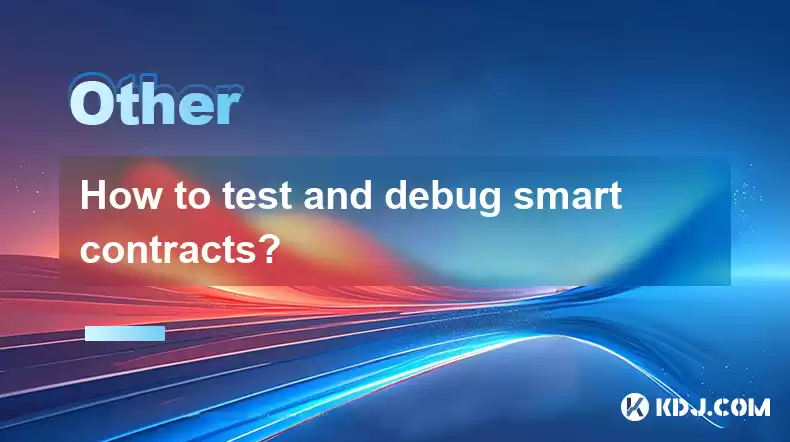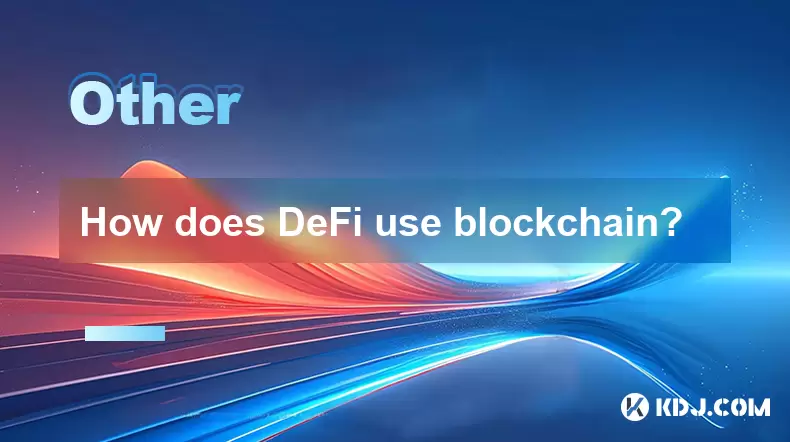-
 Bitcoin
Bitcoin $114000
0.76% -
 Ethereum
Ethereum $3488
0.53% -
 XRP
XRP $2.908
2.27% -
 Tether USDt
Tether USDt $1.000
0.05% -
 BNB
BNB $750.3
0.39% -
 Solana
Solana $161.9
0.14% -
 USDC
USDC $1.000
0.03% -
 TRON
TRON $0.3258
1.22% -
 Dogecoin
Dogecoin $0.1991
1.38% -
 Cardano
Cardano $0.7260
3.39% -
 Hyperliquid
Hyperliquid $38.20
2.33% -
 Stellar
Stellar $0.3987
7.33% -
 Sui
Sui $3.414
1.17% -
 Chainlink
Chainlink $16.28
2.52% -
 Bitcoin Cash
Bitcoin Cash $542.2
2.07% -
 Hedera
Hedera $0.2489
7.51% -
 Ethena USDe
Ethena USDe $1.001
0.05% -
 Avalanche
Avalanche $21.40
0.70% -
 Toncoin
Toncoin $3.635
0.75% -
 Litecoin
Litecoin $109.8
2.04% -
 UNUS SED LEO
UNUS SED LEO $8.955
-0.02% -
 Shiba Inu
Shiba Inu $0.00001221
2.44% -
 Uniswap
Uniswap $9.152
2.20% -
 Polkadot
Polkadot $3.588
2.09% -
 Monero
Monero $298.1
1.27% -
 Dai
Dai $1.000
0.01% -
 Bitget Token
Bitget Token $4.326
1.28% -
 Pepe
Pepe $0.00001045
1.96% -
 Cronos
Cronos $0.1330
4.27% -
 Aave
Aave $257.9
2.12%
How to test and debug smart contracts?
Smart contracts, crucial for dApps, require thorough testing and debugging to ensure reliability and security, using tools like Truffle and Remix on platforms like Ethereum.
Apr 15, 2025 at 08:43 am

Smart contracts are self-executing contracts with the terms of the agreement directly written into code. They run on blockchain platforms like Ethereum, enabling trustless and transparent transactions. Given their critical role in decentralized applications (dApps), testing and debugging smart contracts is crucial to ensure their reliability and security. This article will guide you through the process of testing and debugging smart contracts, covering various techniques and tools used in the cryptocurrency circle.
Understanding the Importance of Testing and Debugging
Testing and debugging smart contracts are essential steps in the development process. These activities help identify and fix bugs, vulnerabilities, and logic errors that could lead to financial losses or security breaches. By thoroughly testing and debugging your smart contracts, you can ensure they behave as intended under various conditions and scenarios.
Setting Up a Development Environment
Before you can start testing and debugging your smart contracts, you need to set up a suitable development environment. Here’s how you can do it:
- Install Node.js and npm: Node.js and npm (Node Package Manager) are essential for managing dependencies and running development tools. You can download and install them from the official Node.js website.
- Set up Truffle: Truffle is a popular development framework for Ethereum smart contracts. Install Truffle globally using npm by running the command
npm install -g truffle. - Install Ganache: Ganache is a personal blockchain for Ethereum development that you can use to deploy and test your contracts locally. You can download it from the Truffle Suite website or install it via npm with
npm install -g ganache-cli. - Choose an Integrated Development Environment (IDE): Popular choices include Visual Studio Code with the Solidity extension, Remix, or Truffle for VSCode. These IDEs provide syntax highlighting, code completion, and debugging tools tailored for Solidity, the primary language for Ethereum smart contracts.
Writing and Compiling Smart Contracts
Once your development environment is set up, you can start writing your smart contracts in Solidity. Here’s a basic example of a simple smart contract:
pragma solidity ^0.8.0;contract SimpleStorage {
uint256 storedData;
function set(uint256 x) public {
storedData = x;
}
function get() public view returns (uint256) {
return storedData;
}
}
After writing your contract, you need to compile it. Truffle can help you with this process:
- Create a Truffle project: Run
truffle initin your project directory to set up a new Truffle project. - Add your contract: Place your Solidity file in the
contractsdirectory. - Compile the contract: Run
truffle compileto compile your smart contract. This command will generate ABI and bytecode files necessary for deployment and interaction.
Testing Smart Contracts
Testing smart contracts involves writing and running test cases to verify their functionality. Truffle provides a built-in testing framework that you can use to write and execute tests. Here’s how to do it:
- Write test cases: Create a new file in the
testdirectory of your Truffle project. For example,test/SimpleStorage.js:
const SimpleStorage = artifacts.require("SimpleStorage");contract("SimpleStorage", accounts => {
it("should store the value 89", async () => {
const simpleStorageInstance = await SimpleStorage.deployed();
await simpleStorageInstance.set(89, { from: accounts[0] });
const storedData = await simpleStorageInstance.get();
assert.equal(storedData, 89, "The value 89 was not stored.");
});
});
- Run the tests: Execute
truffle testto run your test cases. Truffle will deploy your contract to a local blockchain (like Ganache) and execute the tests.
Debugging Smart Contracts
Debugging smart contracts can be challenging due to their execution on the blockchain. However, several tools and techniques can help you identify and fix issues:
- Use Remix: Remix is an online IDE that provides a built-in debugger. You can deploy your contract to Remix’s JavaScript VM and step through the code to identify issues.
- Truffle Debugger: Truffle includes a powerful debugger that allows you to inspect the state of your contract at any point during its execution. To use it, run
truffle debugafter a transaction has been executed. - Solidity Coverage: This tool helps you measure the test coverage of your smart contracts. Install it with
npm install -g solidity-coverageand runtruffle run coverageto see which parts of your code are covered by tests. - Static Analysis Tools: Tools like MythX and Slither can automatically analyze your smart contracts for common vulnerabilities and coding errors. Integrate these tools into your development workflow to catch issues early.
Advanced Testing Techniques
Beyond basic unit tests, you can employ more advanced testing techniques to ensure the robustness of your smart contracts:
- Fuzz Testing: Fuzz testing involves feeding random or unexpected inputs to your smart contract to see how it behaves. Tools like Echidna can automate this process and help you discover edge cases.
- Property-Based Testing: This technique involves defining properties that your smart contract should satisfy and then generating test cases to verify these properties. Tools like Foundry can help you implement property-based testing.
- Integration Testing: Integration tests check how different parts of your dApp interact with each other. You can use Truffle’s migration scripts to deploy multiple contracts and test their interactions.
Best Practices for Testing and Debugging
To maximize the effectiveness of your testing and debugging efforts, follow these best practices:
- Write Comprehensive Tests: Ensure your test suite covers all possible scenarios, including edge cases and error conditions.
- Use Mock Contracts: When testing complex systems, use mock contracts to isolate and test individual components.
- Regularly Update Dependencies: Keep your development tools and libraries up to date to benefit from the latest features and security patches.
- Peer Review: Have other developers review your smart contracts and test cases to catch issues you might have missed.
Frequently Asked Questions
Q: Can I test smart contracts on a public blockchain?
A: While it’s technically possible to test smart contracts on a public blockchain, it’s not recommended due to the cost and potential security risks. Instead, use local development blockchains like Ganache or testnets like Rinkeby or Goerli for testing.
Q: How can I ensure my smart contract is secure?
A: To ensure your smart contract is secure, use a combination of automated tools like MythX and Slither, manual code reviews, and thorough testing. Consider hiring a professional smart contract auditor to review your code before deployment.
Q: What should I do if I find a bug in a deployed smart contract?
A: If you find a bug in a deployed smart contract, assess its severity and potential impact. If the bug is critical, consider pausing the contract if possible, and work on a fix. Communicate transparently with users and stakeholders about the issue and the steps you’re taking to resolve it.
Q: Are there any tools for monitoring smart contract performance?
A: Yes, tools like Etherscan and Tenderly provide monitoring and analytics for smart contracts. They can help you track transaction history, gas usage, and other performance metrics to ensure your contract is running efficiently.
Disclaimer:info@kdj.com
The information provided is not trading advice. kdj.com does not assume any responsibility for any investments made based on the information provided in this article. Cryptocurrencies are highly volatile and it is highly recommended that you invest with caution after thorough research!
If you believe that the content used on this website infringes your copyright, please contact us immediately (info@kdj.com) and we will delete it promptly.
- XRP: Crypto Analyst's Smartest Buy in 2025?
- 2025-08-04 00:30:13
- SEC, Crypto Regulation, and Digital Assets: A New Era?
- 2025-08-04 00:30:13
- Navigating the Meme Coin Mania: Cold Wallets, SHIB, and DOGE in 2025
- 2025-08-03 22:30:16
- Bitcoin's Price Fall and Scrutiny: What's a New Yorker to Think?
- 2025-08-03 22:30:16
- Shiba Inu's Resistance and Recovery Push: What's Next for SHIB?
- 2025-08-03 22:50:16
- Bitcoin, Hashcash, and Crypto Innovation: A Look at the Foundation and Future
- 2025-08-03 23:12:53
Related knowledge

What is the difference between on-chain and off-chain transactions?
Aug 02,2025 at 04:22pm
Understanding On-Chain TransactionsOn-chain transactions refer to digital asset transfers that are recorded directly on a blockchain ledger. These tra...

What is a node's role in a blockchain network?
Aug 03,2025 at 03:16pm
Understanding the Function of a Node in a Blockchain NetworkA node is a fundamental component of any blockchain network, acting as a participant that ...

How are transactions verified on a blockchain?
Aug 04,2025 at 12:35am
Understanding the Role of Nodes in Transaction VerificationIn a blockchain network, nodes are fundamental components responsible for maintaining the i...

What is the double-spending problem and how does blockchain prevent it?
Aug 02,2025 at 01:07pm
Understanding the Double-Spending ProblemThe double-spending problem is a fundamental challenge in digital currency systems where the same digital tok...

What is the difference between a blockchain and a database?
Aug 01,2025 at 09:36pm
Understanding the Core Structure of a BlockchainA blockchain is a decentralized digital ledger that records data in a series of immutable blocks linke...

How does DeFi use blockchain?
Aug 03,2025 at 11:15pm
Understanding the Role of Blockchain in DeFiDecentralized Finance (DeFi) relies fundamentally on blockchain technology to operate without intermediari...

What is the difference between on-chain and off-chain transactions?
Aug 02,2025 at 04:22pm
Understanding On-Chain TransactionsOn-chain transactions refer to digital asset transfers that are recorded directly on a blockchain ledger. These tra...

What is a node's role in a blockchain network?
Aug 03,2025 at 03:16pm
Understanding the Function of a Node in a Blockchain NetworkA node is a fundamental component of any blockchain network, acting as a participant that ...

How are transactions verified on a blockchain?
Aug 04,2025 at 12:35am
Understanding the Role of Nodes in Transaction VerificationIn a blockchain network, nodes are fundamental components responsible for maintaining the i...

What is the double-spending problem and how does blockchain prevent it?
Aug 02,2025 at 01:07pm
Understanding the Double-Spending ProblemThe double-spending problem is a fundamental challenge in digital currency systems where the same digital tok...

What is the difference between a blockchain and a database?
Aug 01,2025 at 09:36pm
Understanding the Core Structure of a BlockchainA blockchain is a decentralized digital ledger that records data in a series of immutable blocks linke...

How does DeFi use blockchain?
Aug 03,2025 at 11:15pm
Understanding the Role of Blockchain in DeFiDecentralized Finance (DeFi) relies fundamentally on blockchain technology to operate without intermediari...
See all articles

























































































